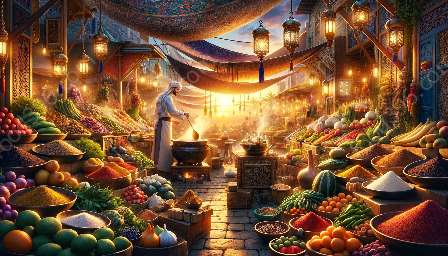Moroccan cuisine boasts a rich and diverse heritage, blending the traditional flavors of Arab, Berber, and French influences. Our exploration of this fascinating topic will delve into the history, ingredients, and signature dishes that define Moroccan cuisine.
The History of Moroccan Cuisine
The culinary history of Morocco is a tapestry woven with the diverse cultural influences that have shaped the country over centuries. Arab, Berber, and French culinary traditions have all played a significant role in defining the flavors and dishes that are emblematic of Moroccan cuisine.
Arab Influence: Arabic expansion into North Africa in the 7th century brought with it a rich culinary tradition that influenced Moroccan cuisine. The Arabs introduced the use of spices, such as saffron, cumin, and cinnamon, which have become integral to the distinct flavors of Moroccan dishes.
Berber Heritage: The indigenous Berber people of North Africa have contributed their own culinary traditions to Moroccan cuisine. Their use of traditional cooking methods and local ingredients, such as couscous and various meats, has left an indelible mark on the country's culinary landscape.
French Influence: During the French colonial period in the 20th century, French culinary techniques and ingredients were introduced to Morocco. This fusion of French cooking styles with Moroccan flavors created a unique blend that is still evident in many dishes today.
Signature Dishes and Ingredients
Central to Moroccan cuisine are a few iconic ingredients and dishes that beautifully showcase the fusion of Arab, Berber, and French influences. Let's explore some of these signature culinary delights:
Tagine
The tagine is a staple of Moroccan cuisine, infused with the aromas and flavors of the region. This slow-cooked stew, traditionally prepared in a tagine pot, features a harmonious blend of meats, vegetables, and spices, often including the traditional use of apricots or prunes to add a tantalizing sweetness.
Couscous
Couscous is a quintessential part of Moroccan cuisine, reflecting the influence of Berber heritage. This fine pasta made from semolina is typically steamed and served with a savory stew of meat and vegetables. It is a beloved staple that has been enjoyed for generations in Moroccan households.
Pastilla
Rooted in both Arab and Berber influences, pastilla is a delectable pastry that beautifully marries savory and sweet flavors. Traditionally filled with pigeon or chicken, almonds, and spices, this dish is often dusted with powdered sugar and cinnamon, creating a tantalizing blend of flavors that exemplifies the fusion at the heart of Moroccan cuisine.
Harira
Harira is a comforting Moroccan soup that has become a symbol of the country's culinary identity. This nourishing dish, often enjoyed during Ramadan, combines tomatoes, lentils, chickpeas, and an array of spices in a rich, flavorful broth. Its origins highlight the merging of Arab and Berber traditions in Moroccan cuisine.
Embracing the Fusion
With its diverse and vibrant blend of Arab, Berber, and French influences, Moroccan cuisine stands as a testament to the rich history and cultural exchange that have shaped the country's culinary legacy. From the enticing aromas of tagines to the comforting warmth of harira, the fusion of these culinary influences creates a truly remarkable tapestry of flavors that continues to captivate and delight enthusiasts of Middle Eastern and global cuisine.

